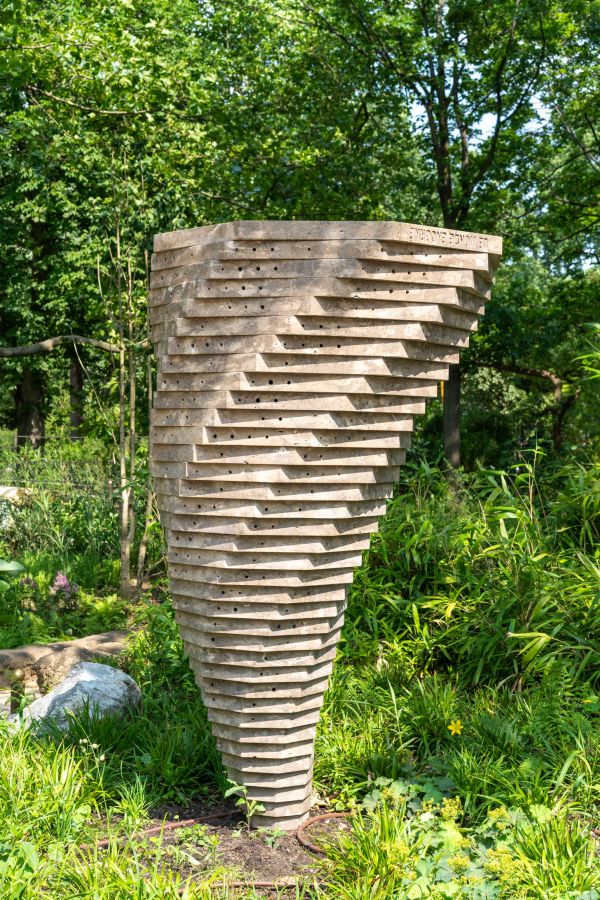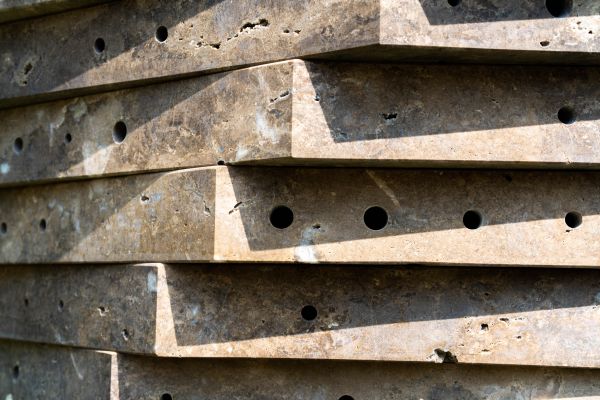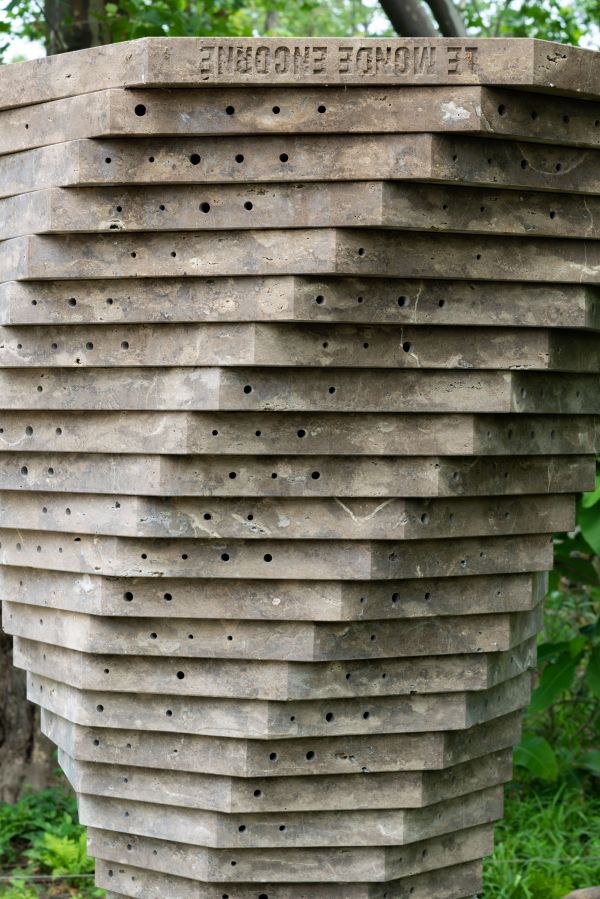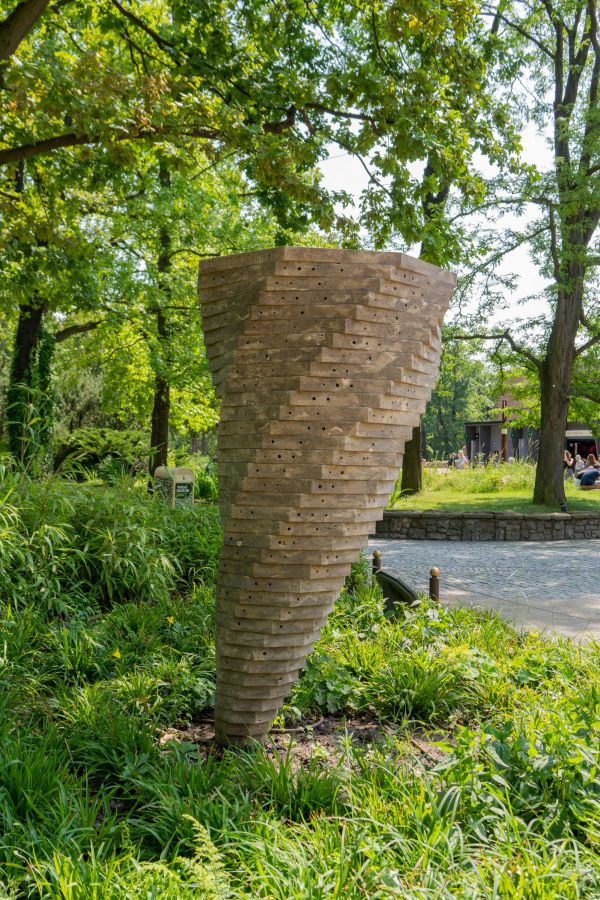Ein Horn








Ein Horn, 2022 – 2023
(le monde encorné / le monde encore né)
Limestone
216 × 120 × 120 cm
Permanent sculpture at Zoo Berlin
Ein Horn is an autonomous object on the crossroads of art, architecture and ecology. It can be seen as a sculpture, a monument, as well as an architectural solution for pollinating insects. The sculpture represents an upside down horn pricked in the ground.
Made solely out of Dolomit limestone, a natural material locally sourced in Germany, Ein Horn is built of layered octagonal stone slabs modules. Each level is slightly twisted but always leveled to the horizon, as in an elevation model. This technique gives it a futuristic yet organic aesthetics, also freely quoting the neighboring Rhino pagoda.
Ein Horn reflects on the principles of Metabolism, a post war Japanese architectural movement that fused ideas about architectural megastructures with those of organic biological growth. Many bulidings where then inspired by animal architecture, but adapted for human use. Ein Horn, as a modular architecture for insects, reverses the concepts of Metabolism, giving them back to fauna.
As the new Rhinoceros facility is a sanctuary dedicated to endangered species, this artwork adds functionality meant to support some often overlooked native species. Pollinating insect populations, vital to our ecosystems are being widely decimated by human activity. The sculpture takes the opportunity of its twisted levels design to be a potential refuge for pollinating insects. Hundreds of holes of different diameters are drilled in the stone and positioned under the roofed areas, protecting them from being wet. They will accommodate different species of native tube nesting insects such as red mason bees (Osmia sp), leafcutter bees (Megachile sp) or bell bees (Chelostoma sp).
The basic shape of each storey is an octagon, a geometrical form that traditionally symbolises renewal, rebirth, regeneration, and transition. This idea of rebirth is here underlined by an engraved french language wordplay. Le Monde Encore Né literally translates as “The world reborn”, but can be also read as “The Gored World” (Le Monde Encorné), which is engraved on the other side of top layer octagon’s edge. In this sense it refers directly to conceptual artist Piero Manzoni’s iconic work Socle du Monde, 1961: a large metal plinth, inscribed 'The Base Of The World'. It announces that the whole world is a work of art.
Ein Horn also refers to the Karkadann, a mythical creature said to have lived on the plains of India and Persia . like a unicorn based on the Indian Rhinoceros with remarkable qualities, such as a horn endowed with medicinal properties. Ein Horn, a horn without a body, recalls the myths that lead to tragic poaching of the Rhinoceros species to a point of almost extinction. It calls for hope in renewal and regeneration for all endangered species.





